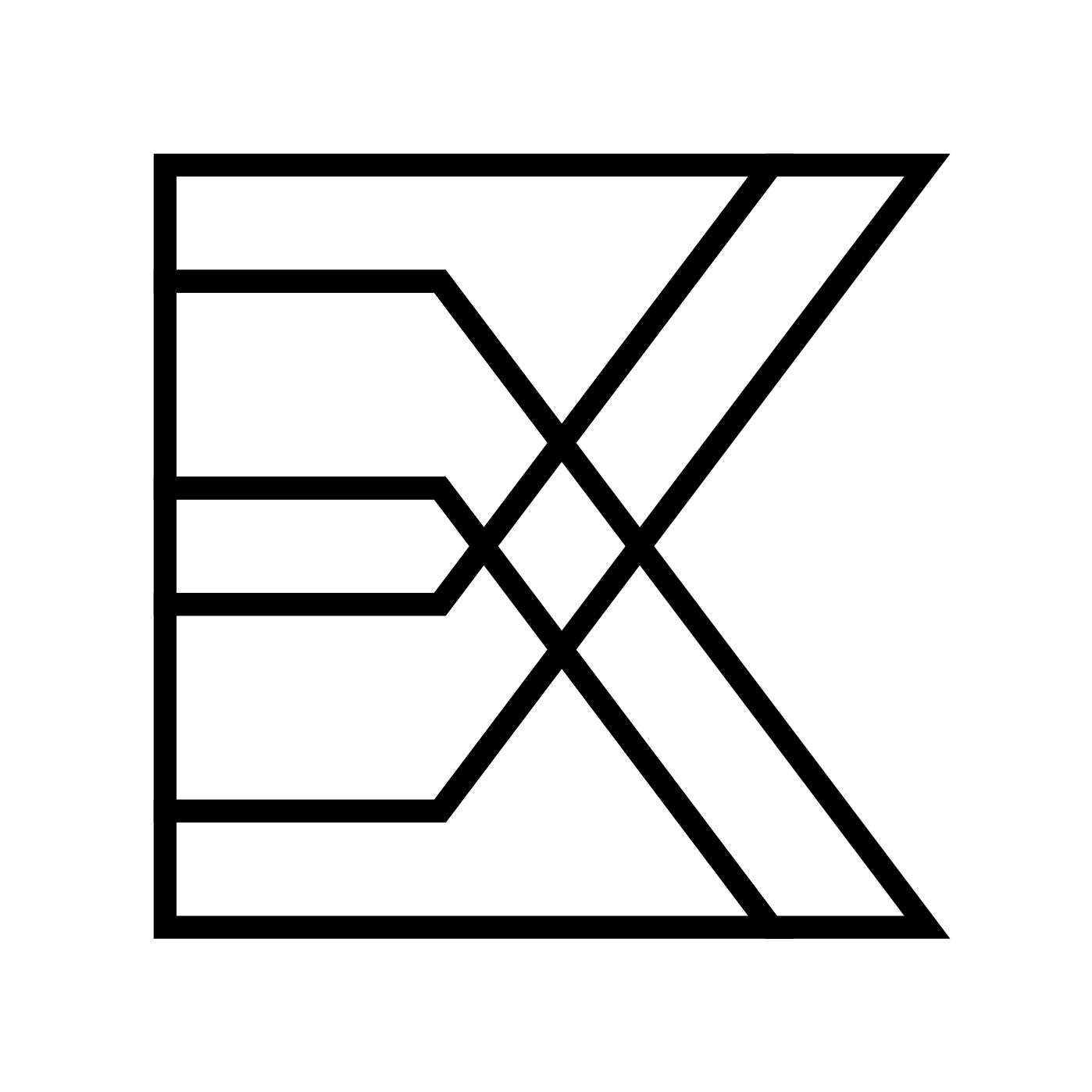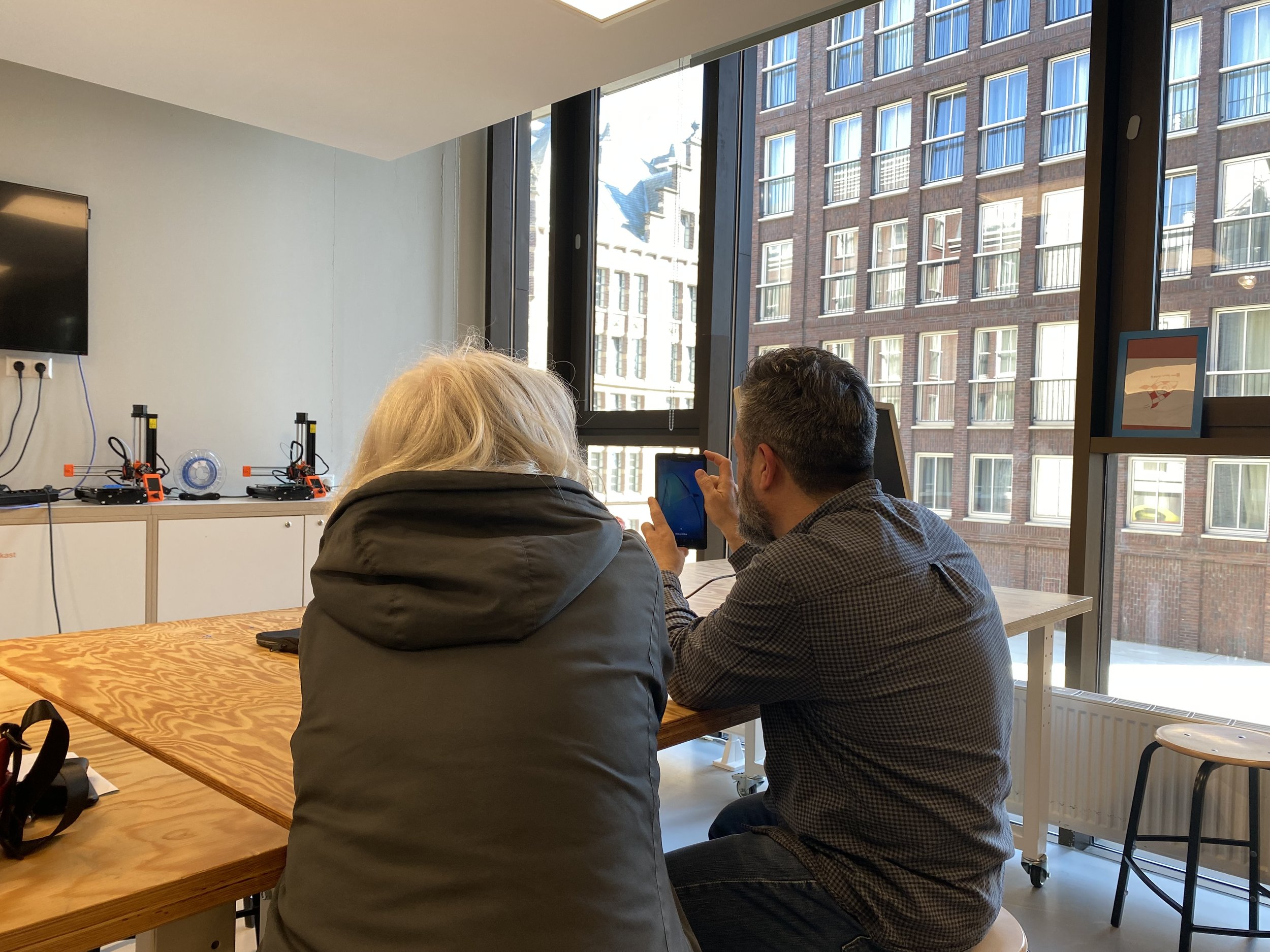DIMS
DIMS (Dutch Immigration Search) is a web application providing necessary information for immigrants about their processes with a customized search engine.
Client
Amsterdam Public Library (OBA), Ontwerplab
Project Type
UI/UX, Concept, Service, Visual Design
Year and Duration
2022 - 5 months
Team
Elif Kuvanlik, Emma Koole, Melissa Akkoç, Xabyne van Veen
Role
Research, Concepting, UI & UX Design
Overview
A customizable search engine for immigrants
The Netherlands is home to thousands of immigrants every year. To support the integration process of people with no network or common language, it's crucial that they receive assistance. It is the goal of OBA to provide knowledge and culture to all Amsterdammers.
Problem Space
Many affairs are handled digitally in The Netherlands. This can be hard for many digitally unskilled people, such as elderly and low-income families with limited financial means for devices such as laptops. It's even more complicated if you lack resources such as equipment, a network to rely on and struggle with a language barrier. Our task was to think of a solution to bridge this digital divide.
Solution
DIMS gives the user the opportunity to search in their native language with its customized search engine, guides them through their integration process and let them know about the organizations around Amsterdam where they can ask their questions, get language classes or to join different types of events.
Challenges
01 What can we do to ensure that immigrants who lack digital literacy have easy access to reliable information about the integration process?
02 How can we direct immigrants to organizations that provide assistance around Amsterdam?
03 How can we design for people with less digital skills?
Process
Research
Understanding the needs &
challenges
As a result of desk and field research, interviews with experts, observations at organizations, and interviews with possible target audiences, we have found that it is difficult to integrate into the Dutch system with digital illiteracy because the government and municipal websites are not designed with this perspective in mind - they have complex user interfaces that make it difficult to navigate.
Moreover, most of the information that new Amsterdammers need to know is only available in Dutch and is dispersed all over the web. In addition, we realized from our research that the content of audiences that might be our target audience is very diverse. There can be many factors that create this, such as age, economic and social circumstances, culture, and living conditions. Hence, we also performed in-depth research to determine who our target audience is, and we designed a product accordingly.
It is also important to note that establishing a network facilitates the integration process. In Amsterdam, many organizations provide assistance with subjects ranging from digital jobs to language courses, such as OBA.
There were two main challenges we faced. The first challenge is how to provide reliable information on the integration process to newcomers who lack digital literacy in Amsterdam. For non-Dutch speakers, finding reliable sources of information can be difficult since the majority of the information is in Dutch. The second issue is how we can direct migrants to local organizations that can assist them. These organizations operate independently, so newcomers have difficulty knowing if they exist.
Observations at Cybersoek and Leef&Leer!.
Clustering the research findings.
Self-Reliance
During our observations and interviews with Vluchtelingenwerk (a Dutch refugee support organization), we learned that our target audience requires a lot of guidance to adhere to comprehensive protocols for integrating into Dutch society. For instance, instead of going to the hospital without an appointment, you should consult with your family doctor first. It is also possible to get furniture support for your new home, but you need to know how to apply first. The first thing we noticed was the lack of a structured overview of what should be regulated. It contradicts the sense of self-confidence that the Netherlands promotes among its citizens.
When we realized this, we decided on our main goal: to make immigrants and new Amsterdammers more self-reliant.
Sprint Week
Our goal was to quickly build a working prototype for testing with our target audience through a Sprint week. The week started with a co-creation session with our client to discuss the prototype we were going to build and to make sure we got all the information we needed from them. We first did the 6-3-5 method and applied the Disney Method to the ideas we gathered from the 6-3-5 method.
Therefore, it was decided to create a step-by-step guide for migrants to follow during the integration process. As an example, when they move from an asylum center, they must notify the municipality of their new address and register with a GP before they are eligible to receive health services. Obviously, to accomplish these things, they need to know what they need to do and how to accomplish them. This guide is intended to assist them.
In addition to showing them what needs to be taken into consideration during integration in the Netherlands, we also include organizations in and around Amsterdam so they can get assistance in any way they choose. Specifically, we have written this guide in the language of our target audience. Throughout the project, we created the sitemap and wireframe and conducted user testing with Turkish and Arabic-speaking refugees.
Co-creation session at OBA with Ontwerplab.
Wireframes and notes from the ideation session we did within our team. Some ideas were used, and some were discarded.
Wireframes and First Prototype
User Testings
Testing has shown that the guide's content is extremely useful for our target audience. However, the framework is not suitable since everyone needs customized information. This design also contains a lot of contextual information that is dependent on the organizations that created these helpful articles.
Moreover, we discovered that our target audience was not familiar with the design conventions we used, such as hamburger menus and drop-down menus.
However, we learned that they rely heavily on Google and YouTube. In our testing, when we asked them to search for something on the prototype, they said they wanted to use Google. Based on this, we were able to get a better sense of what we should do in the second iteration.
Arabic-speaking participants with a translator (left and middle) and the Turkish-speaking participant (right)
Second Iteration
DIMS - Dutch Immigration Search
As part of the iteration phase, we developed a new prototype centered around a search engine. The search bar on the homepage includes a translation function that allows users to find reliable information about integration in the Netherlands from websites in their native language and in Dutch and English. Using filters, we provide a customized search results page to avoid presenting irrelevant results to users.
Typically, to find official information about rent allowance in the Netherlands, you would need to type "huurtoeslag" into your search engine. However, DIMS enables you to search in your chosen language, and all articles with reliable information about "huurtoeslag" are displayed. Additionally, you will be able to read Dutch content in your language. Each website displayed in the search results is carefully selected in order to ensure credibility.
The Difference Between DIMS and Google
When it comes to Google and Dims, Dims filters out outdated and irrelevant articles, whereas Google displays everything, including unreliable news. In our prototype, relevant articles are retrieved from Government websites as well as reliable informational websites in multiple languages. Apart from Google, the filters in DIMS can also be changed depending on the person's situation. In some cases, an immigrant's search results will be different from an international student's search results. Our search section has been expanded to include another filter, which will help people find the information they are looking for easily. Users can access the desired results through these filters (All, Turkish, Governmental, Informational).
Designing for Digitally Illiterate People
Participants appreciate the fact that the step-by-step guide is in their native language, and they are satisfied with the contents. We decided to include the modified guide as a suggested article on the website following an iteration. Apart from the guide, we also added different content such as "How and what to use DigiD for", and "How to use Google Translate" to the Suggested Articles. Additionally, we implemented a feature that guided users to all the organizations and events held in Amsterdam.
To better assist our digitally illiterate target audience, we designed a help button. This includes animated information on how features on each page work. Testing proved that using the correct conventions is crucial for a good user experience. For digitally illiterate people, it's essential that they can relate to what they see. Instead of abstract line icons, we try to mimic the physical world by using 3D icons.
In addition, we color-coded the user groups, so they understand better which content applies to them. Selecting a filter also changes the content in "Suggested Articles".
Future Outlook
With this solution, we hope to create greater awareness of digital illiteracy and inaccessibility, and this can lead to better and more careful designs from government and websites, thereby bringing greater consideration to digital illiteracy and language barriers. With this design, we aim to make new Amsterdammers more confident and self-reliant.
OBA's willingness to implement this project also supports our aim.
This project was developed in collaboration with Openbare Bibliotheek Amsterdam (Amsterdam Public Library) as part of the Amsterdam University of Applied Sciences' Master Digital Design.




























